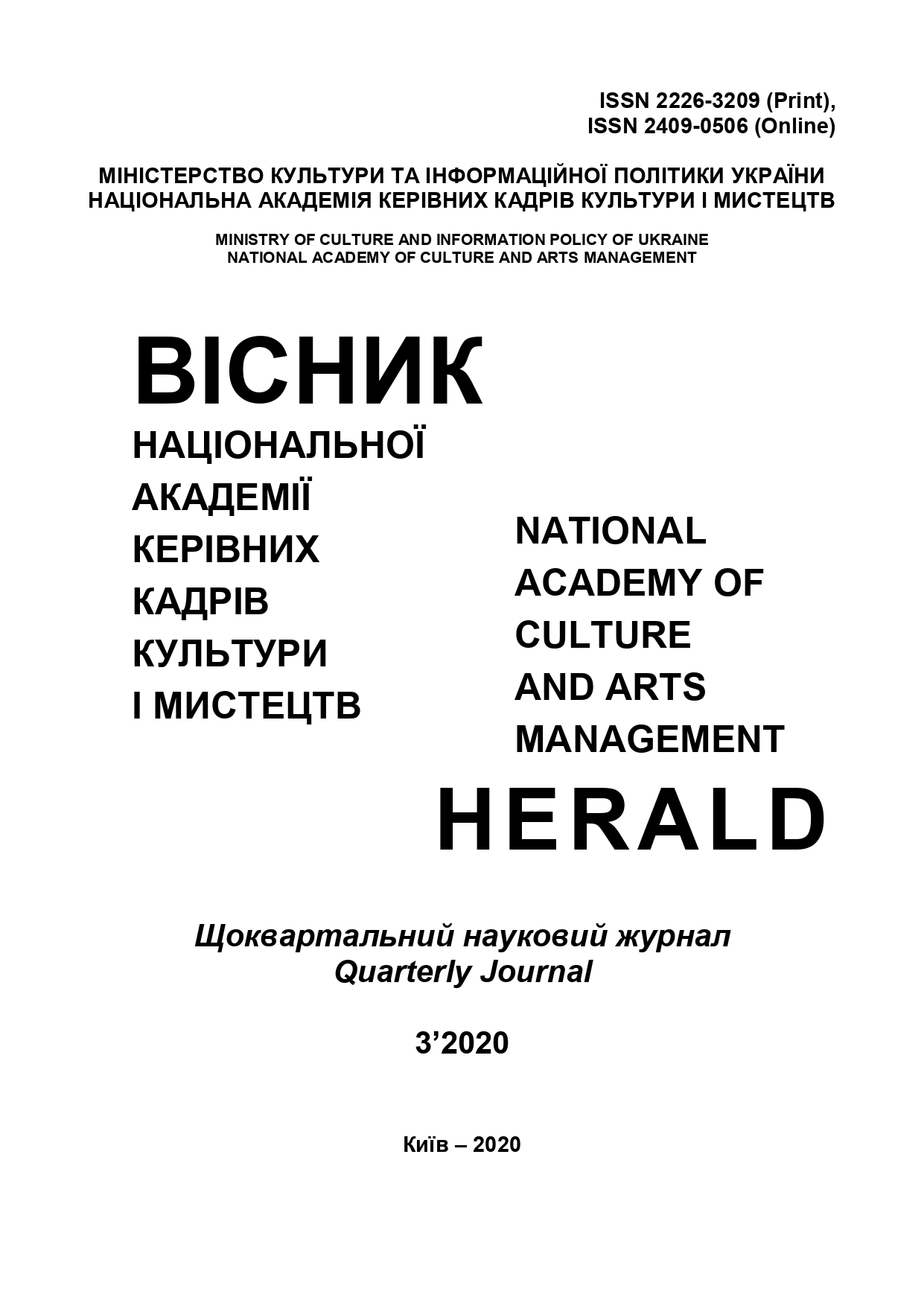Тілесна виразність актора у теоретичних поглядах та сценічній практиці ХХ – початку ХХІ ст.
The body expressiveness of the actor in theoretical views and stage practice of the XX – beginning of the XXI century
Author(s): Ruslan NуkonenkoSubject(s): Theatre, Dance, Performing Arts, Recent History (1900 till today), Sociology of Art
Published by: Національна академія керівних кадрів культури і мистецтв
Keywords: body; physicality; plastic; theatrical art; means of acting; movement; gesture;
Summary/Abstract: The purpose of the article is to reveal the specifics of the actor‘s bodily expressiveness in the context of the features of theoretical developments and the practical implementation in stage practice of leading theater directors of the twentieth and early twenty-first centuries. Methodology. The study is based on modern art criticism and philosophical concepts of the study of the phenomenon of physicality. Given the interdisciplinary nature of this issue, in the process of researching and analyzing the body expressiveness of the actor, the cultural-historical method is used (to define the concept of ―corporeality‖ in the context of cultural, artistic and philosophical concepts); comparative analysis method (for comparing the methods and methods of representing corporeality in theoretical works and the practical activities of leading theater directors); typological method (to identify factors of formation of actor‘s bodily expressiveness); the method of scientific observation and analysis (to determine the specifics of the bodily nature of the means of plastic expression of an actor) and other. Scientific novelty. An art history study of physicality was carried out in the context of the specifics of theatrical art; the process of transition of understanding the actor‘s physicality from abstract to dynamic in the context of transformational processes of theatrical art is considered; identified and analyzed general and distinctive value attitudes, as well as forms of representation of acting corporeality in theoretical developments and stage practice of leading directors of the twentieth – early twenty-first century. Conclusions. Analysis of the formation process at the turn of the nineteenth – twentieth centuries. and the further development of the director's theater testifies to the unique transformations of the socio-cultural space at the level of bodily-mental changes reflected in the structural, kinetic, and plastic aspects of acting. In the process of complex synthesis, corporeality gradually turns from a means of actor‘s expressiveness, with the help of which a story is told in a theater space, into a source of mimetic meanings and meanings in the process of reproducing the art of reality.
Journal: Вісник Національної академії керівних кадрів культури і мистецтв
- Issue Year: 2020
- Issue No: 3
- Page Range: 280-285
- Page Count: 6
- Language: Ukrainian

